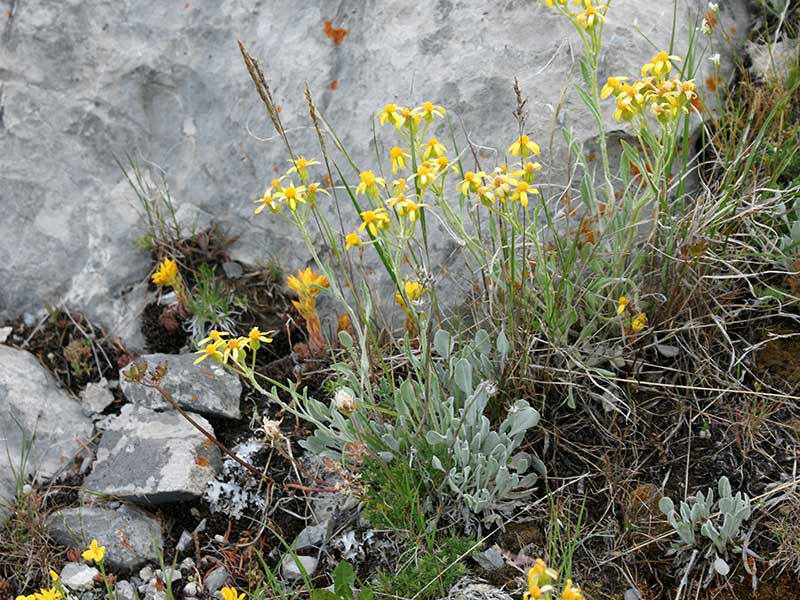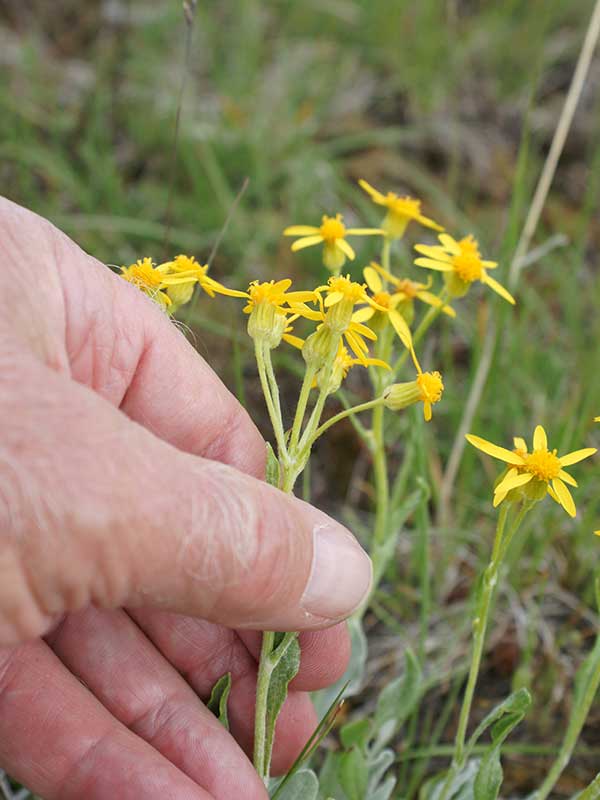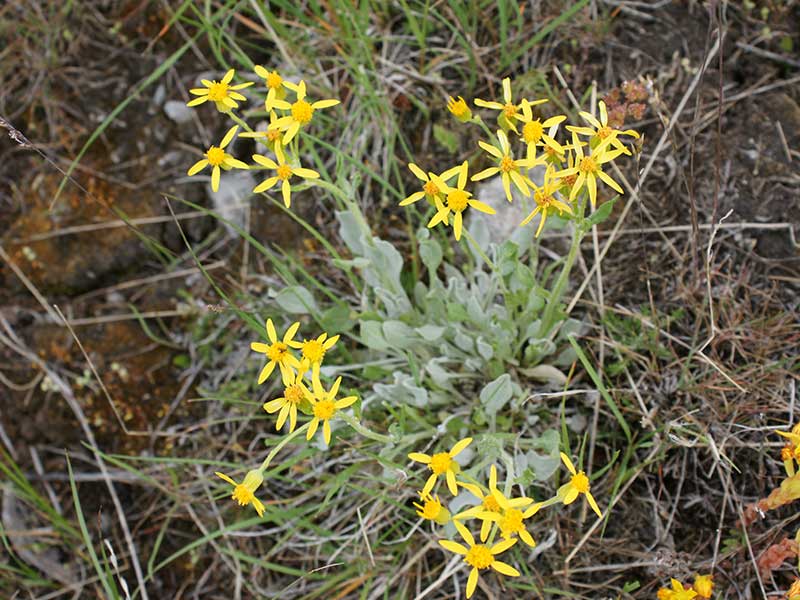Packera cana / woolly groundsel
- yellow, daisy-like blossoms with 8-13 ray florets (“petals”)
- golden, central disks
- blossoms in flat-topped clusters of up to 15
- mostly basal leaves – unlobed, hairy, ovate, up to 2 inches long
- overall silvery appearance
Also known as: grey/gray ragwort
Synonym: Senecio cana
Both senecios and packeras are recognizable as being daisy-like flowers with yellow “petals” but not too many of them. These, alone, are not much use if you want to know the actual species. In this case, therefore, prime identifying features are the unlobed, hairy, ovate leaves, up to 2 inches long. The hairs are white-ish and woolly on both surfaces, giving the plant a silvery cast. Most of the leaves are in a basal rosette, with fewer, smaller and sometimes toothed leaves on the flowering stems.
The blossoms of woolly groundsel occur in erect clusters of ca. 8 to ca. 15. Their arrangement is corymb-like, i.e. more or less flat across the top at the very tip of the stem. Occasionally the flowering stalks may branch. The individual blossoms are ¾ to 1 inch across, with a golden yellow center disk and 8, 10 or 13 yellow ray florets (petals). Like the leaves, the flower stalks are densely covered in matted hairs.
Wooly groundsel occupies rocky sites in mountain shrub, Douglas fir, spruce-fir and alpine tundra communities. It can often be found in talus slopes and high ridges. Extremely droughty soils are the norm.
Packera cana is insect-pollinated by a variety of common flying insects. Reproduction is entirely by seeds and over short distances.
| Color | |
|---|---|
| Family | |
| Blossom size | |
| Inflorescence size | |
| Inflorescence type | |
| When? | |
| Where? |



